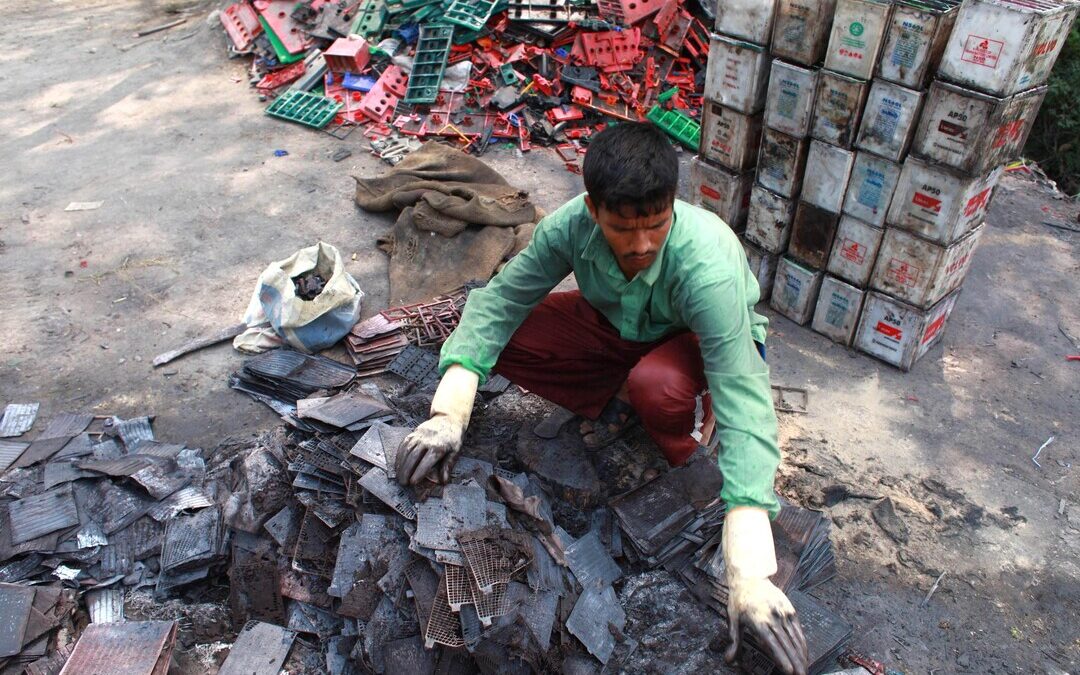Lead Exposure Drains $3.4 Trillion From Global Economy, NUS Study Warns
Researchers warn that unchecked lead exposure is causing trillions in losses and deepening global health and economic inequalities.
Lead poisoning, once considered a relic of the industrial past, continues to inflict enormous economic and health damage worldwide, costing nations more than $3.4 trillion a year, a new study by the National University of Singapore has found.
The research, published in Communications Earth & Environment on Sept 30, revealed that childhood lead exposure now drains over 2 percent of global gross domestic product annually.
Despite the 2021 global ban on leaded gasoline, legacy contamination and unsafe recycling are keeping exposure alive, especially in low- and middle-income countries.
“People believe the problem ended with leaded fuel,” said Dr Chen Mengli, lead author and research fellow at NUS’s Tropical Marine Science Institute. “But new sources have emerged, and historic emissions continue to re-enter the environment.”
Lead’s Toxic Legacy
Lead has been part of human civilization for millennia, used in plumbing, paints and industrial alloys. The most devastating pollution occurred in the 20th century when tetraethyl lead was added to gasoline. By the time the final ban took effect in Algeria in 2021, more than 9 million tons of lead had entered the atmosphere.
That ban remains one of modern public health’s greatest victories. Yet, the new analysis shows its success has been uneven.
Blood-lead levels have dropped sharply in high-income nations but plateaued or even risen in parts of Asia, Africa and Latin America. In these regions, children still record average levels exceeding the World Health Organization’s safety threshold.
The research team, which included experts from Imperial College London, Oxford, Warwick and Michigan, found that industrial processes, coal combustion and the informal recycling of lead-acid batteries have replaced gasoline as the main sources of contamination.
New Emissions, Old Dangers
Global lead production now exceeds 16 million tons a year — far higher than during the era of leaded gasoline, according to the paper.
About 85 percent goes into lead-acid batteries for vehicles and power backups. Although the metal can be recycled, much of that recycling occurs under hazardous conditions in developing countries.
Pure Earth, a nonprofit tracking toxic sites, has identified more than 300 informal recycling yards in Bangladesh alone, many near homes and schools.
Similar hotspots exist in India, Senegal and Vietnam. The NUS study estimated that 10,000 to 30,000 such sites in poorer nations collectively expose up to 17 million people.
Coal burning remains another persistent emitter, contributing roughly 30 percent of global airborne lead between 2005 and 2012.
Even in cities with tighter controls, fine dust continues to release decades-old lead stored in soils. In London and Singapore, legacy emissions still account for up to 40 percent of airborne particles linked to lead exposure.
Children Bear the Brunt
Lead is a potent neurotoxin. Even at low concentrations, it impairs brain development, reduces IQ and increases the risk of behavioral disorders.
The NUS team estimated that today’s childhood lead exposure alone translates into annual income losses equivalent to $3.4 trillion globally.
The economic impact is most pronounced in developing countries, where weaker regulation and higher population growth amplify the costs.
According to the 2019 Global Burden of Disease Study, lead exposure causes about 900,000 deaths and 22 million disability-adjusted life years each year, placing it between AIDS and tuberculosis in terms of global mortality.
“Lead is still stealing children’s futures,” said Chen. “Its effects are permanent and often invisible until too late.”
Four Urgent Steps
The authors urged governments and industries to act on four fronts. First, they recommended managing the entire life cycle of lead-based products — from manufacturing to disposal — to stop leakage into the environment.
Second, they called for eliminating unsafe and illegal recycling, along with banning toxic paints, ceramics and adulterated spices still found in many markets.
Third, the study emphasized stronger monitoring. Advances in machine learning and low-cost sensors can help identify contamination hotspots faster, especially when combined with community reporting.
Finally, policymakers should account for the full social cost of exposure when shaping regulations and development priorities.
Without these measures, the authors warned, growing demand for electrification and renewable-energy storage could worsen pollution. Batteries powering electric vehicles and solar systems may become the next major source of lead if not handled responsibly.
Call for Vigilance
Researchers said the lesson from gasoline bans is clear: coordinated global action works, but complacency reverses progress. Legacy lead remains embedded in soils, infrastructure, and supply chains, making it a long-term threat.
“The world rightly celebrated the end of leaded petrol,” Chen said. “But unless we stay vigilant about new emissions and old contamination, we risk repeating the same tragedy.”
The study concluded that eliminating exposure is not only a health imperative but also an economic one. Protecting children from lead could recover trillions in lost potential, narrow global inequalities, and deliver one of the highest returns on investment in public health.
Also Read:
Plastic Pollution Costs $2.2T Annually, UN Pushes for Sustainable Substitutes
Nirmal Menon
Related posts
Subscribe
Error: Contact form not found.


